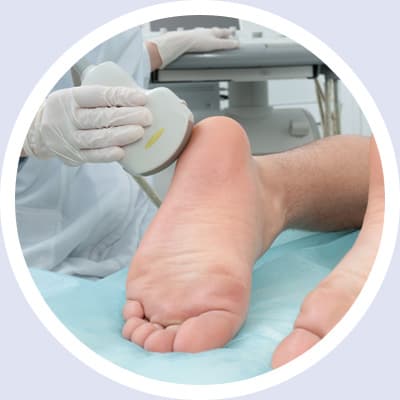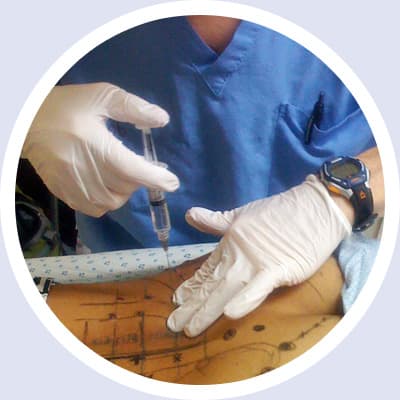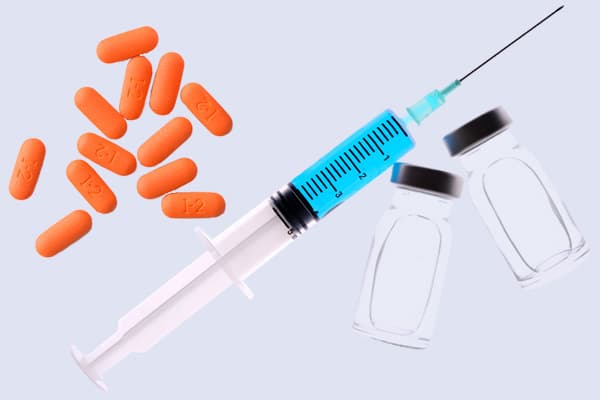Foot & Ankle Joint
PAIN TREATMENTS
Let’s face it, it is difficult to ignore if you have a foot or ankle problem. Pain can start out subtle and we make adjustments, putting more weight on the foot and ankle that hurts less. Some people stop doing the exercises they love most, like running. Symptoms can progress and ultimately inhibit just the ability to walk pain-free.
The feet and ankles are complex structures that bear the whole body’s weight. They are the base of our skeleton and prone to overuse, arthritis, degeneration, laxity, instability and ultimately pain.
Fortunately, foot and ankle injuries are particularly responsive to regenerative medicine therapies.
Common reasons for foot and ankle pain include:
The feet and ankles are complex structures that bear the whole body’s weight. They are the base of our skeleton and prone to overuse, arthritis, degeneration, laxity, instability and ultimately pain.
Fortunately, foot and ankle injuries are particularly responsive to regenerative medicine therapies.
Common reasons for foot and ankle pain include:
Achilles Tendon Injury
Plantar Fasciitis
Ankle Sprains and Instability
When the ligament or ligaments do not heal correctly they weaken and make one prone to recurrent ankle sprains. This is instability. It may be described as a weak ankle but the cause is from ligament damage and loss of strength in that ligament.
Ultimately this leads to chronic pain in the ankle and loss or restriction of function.
Osteoarthritis of the Ankle
Posterior Tibial and Peroneal Tendonitis
The peroneal tendon is on the outside of the leg and attaches to the outside of the foot. It can be injured with ankle sprains and other trauma as well wear and tear from repetitive movements. Both of these tendons can lead to pain anywhere from the lower leg to the foot. They are vital for stability to the ankle and can lead to chronic ankle pain.
THE KRASNICK SOLUTION
How can Dr. Krasnick help you recover and restore naturally to health without drugs or surgery?

EXAM & DIAGNOSIS
Before a patient can be treated for foot and ankle pain, a correct diagnosis must be made.
Learn More
First, Dr. Krasnick will obtain a detailed history and perform a thorough physical examination. Frequently a musculoskeletal ultrasound will be done to understand where your foot and ankle pain is coming from. If you have any imaging studies such as X-rays, MRI or CT Scans, please bring the actual images to the appointment for Dr. Krasnick to review himself.

TREATMENT PROGRAM
Once a diagnosis is made, a comprehensive treatment program will be determined.
Learn More
This may include regenerative medical treatments such as: Prolotherapy, Platelet Rich Plasma (PRP), Stem Cell Therapy, Prolozone™, Neural Prolotherapy (Lyftogt Technique®) and Hydrodissection. None of these treatments contain any drugs, steroids, narcotics or NSAIDs, are performed in the office and do not require surgery. Dr. Krasnick performs injections under ultrasound guidance, so he is highly accurate in injecting the treatment to the exact location needed. These treatments allow the body’s own natural healing powers to recover and restore to health.

HEALTH & WELLNESS
To optimize treatment, we focus on the whole patient and not just the foot and ankle pain.
Learn More
This means Dr. Krasnick will investigate, discuss and make recommendations about your health and wellness. Important factors in order to optimize outcomes include cellular health. This entails optimizing your nutrition and diet to ensure you are getting the proper macro and micronutrients. Simple changes in diet and addition of vitamins and supplements can go a long way to improving outcomes. Dr. Krasnick will also focus on functional movement, which includes strength and flexibility. We know the body, especially, the musculoskeletal system acts as a whole and therefore pre- and post-treatment exercise or physical therapy will be recommended. Of course treatment and attention to the injured structure (joint or surrounding ligaments and tendons) will be discussed in detail, with specific post-procedure protocols when needed.
A procedure is not always needed and when possible trying to solve the problem with other noninvasive and holistic approaches will be sought.
None of the regenerative treatments contain any drugs, steroids, narcotics or NSAIDs, are performed in the office and do not require surgery. Dr. Krasnick performs injections under ultrasound guidance, so he is highly accurate in injecting the treatment to the exact location needed. These treatments allow the body’s own natural healing powers to recover and restore to health.
If you are looking for a non-surgical, drug-free, natural, alternative pain treatment for your foot and ankle pain, then contact us at (734) 585-5653 to schedule a consultation with Dr. Krasnick.
OVERVIEW OF FOOT & ANKLE PAIN CONDITIONS
Achilles Tendon Injury
More About This Condition
Plantar Fasciitis
More About This Condition
Ankle Sprains and Instability
More About This Condition
When the ligament or ligaments do not heal correctly they weaken and make one prone to recurrent ankle sprains. This is instability. It may be described as a weak ankle but the cause is from ligament damage and loss of strength in that ligament.
Ultimately this leads to chronic pain in the ankle and loss or restriction of function.
Osteoarthritis of the Ankle
More About This Condition
Posterior Tibial and Peroneal Tendonitis
More About This Condition
The peroneal tendon is on the outside of the leg and attaches to the outside of the foot. It can be injured with ankle sprains and other trauma as well wear and tear from repetitive movements. Both of these tendons can lead to pain anywhere from the lower leg to the foot. They are vital for stability to the ankle and can lead to chronic ankle pain.
Traditional treatments. Have you tried them and still have pain?

Non-Steroidal-Anti-Inflammatory-Drugs (NSAIDS) such as Ibuprofen, Advil and Motrin can temporarily relieve pain, but also reduce the cells that are needed to repair damaged tendons and ligaments and this can lead to more instability and pain! NSAIDS can also lead to bleeding in the stomach, ulcers and kidney damage. Narcotics are also used to treat pain in feet and ankles, but can lead to side effects of constipation and drug dependency. For some patients, surgery is considered, but has greater risks such as infection or more pain.
